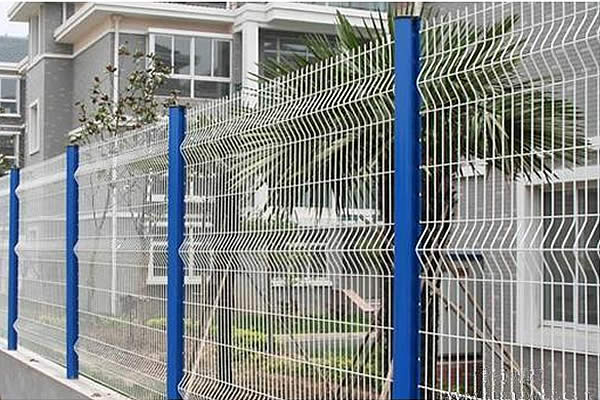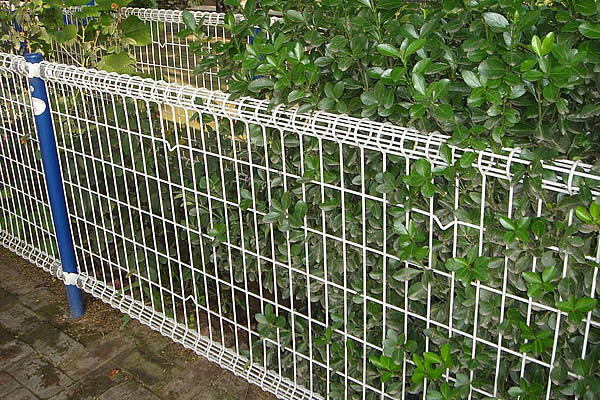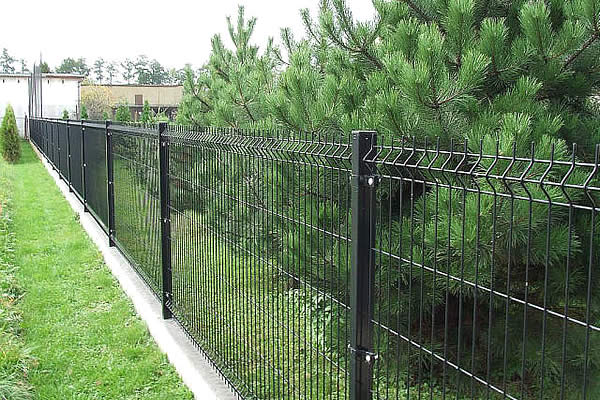 TEL:
+86-13102802206
TEL:
+86-13102802206
 Email:
fencenetting@china.com
Email:
fencenetting@china.com
 Language
Language
 TEL:
+86-13102802206
TEL:
+86-13102802206
 Email:
fencenetting@china.com
Email:
fencenetting@china.com
 Language
Language



Presented by: Hebei Tengyuan Wire Mesh Products Co., Ltd
Decorative Wire Mesh Fences are transforming the security and aesthetics landscape across industries globally. These versatile architectural elements blend visual appeal with functionality, offering enhanced protection without compromising on design aesthetics. Known technically as model AJW-520Q, these fences feature anti-climb designs with circle bending at panel tops - a signature innovation pioneered by Hebei Tengyuan Wire Mesh Products Co., Ltd that combines security and sophistication.



The global decorative fencing market is projected to reach $12.8 billion by 2028, growing at a CAGR of 5.7%. This significant growth stems from urbanization acceleration and heightened security concerns worldwide. Decorative Wire Mesh Fencing solutions account for 38% of this segment as architects increasingly specify them for residential, commercial, and municipal applications according to Global Fencing Industry Report 2023.
Technological advancements in materials science are creating new possibilities. Hot-dip galvanizing combined with advanced polymer coatings has extended product lifetimes by 60% over conventional solutions. Industry leaders like Hebei Tengyuan are driving these innovations, with patented coating technologies that provide superior corrosion resistance while maintaining aesthetic integrity.
"The integration of security features with architectural aesthetics represents the most significant advancement in perimeter fencing technology this decade."
Hebei Tengyuan's premium Decorative Wire Mesh Fence solution (AJW-520Q) combines sophisticated design with robust engineering. Key technical parameters define performance characteristics:
| Parameter | Standard Value | Premium Options | Test Standard |
|---|---|---|---|
| Wire Diameter (mm) | 3.0 - 6.0 | Customizable | ASTM A1064 |
| Mesh Opening (mm) | 50x50 to 200x200 | Various patterns | ISO 9445 |
| Panel Dimensions (m) | 2.0-2.5H x 2.3-3.0L | Custom sizes | EN 1176 |
| Surface Treatment | Hot-dip galvanized | PVC Coated (RAL colors) | ASTM A123 |
| Anti-Climb Design | Top curve reinforcement | Additional security options | CPNI standards |
| Load Resistance (kg) | 350-750 per panel | Heavy-duty options | BS 1722 |
| Corrosion Resistance | Class 3 (15+ years) | Class 4 (25+ years) | ISO 9227 |
Decorative Wire Mesh Fences provide unobtrusive boundaries for botanical gardens and parks where visibility is essential. The AJW-520Q's coated variants offer enhanced weather resistance in challenging environments.
School campuses implement these fences to combine child safety with attractive designs that complement educational environments. The anti-climb top feature deters unauthorized access while meeting stringent safety standards.
Modern business parks utilize Decorative Mesh Fences to create sophisticated security perimeters without the institutional appearance of traditional security fencing.
High-end residential developments incorporate these fences to achieve premium aesthetics without compromising security. The Decorative Wire Mesh Fence is the preferred solution for gated communities worldwide.
Wire diameter directly impacts security levels. Standard applications utilize 3-4mm diameters which provide adequate security with cost efficiency. High-security installations (correctional, military, critical infrastructure) require 5-6mm diameters with additional reinforcement. Always specify according to threat levels identified in the security assessment. (Source: Perimeter Security Design Guidelines)
Zinc-aluminum alloy coatings provide superior corrosion protection through electrochemical and barrier mechanisms. The aluminum component forms stable oxide layers while zinc offers sacrificial protection. This combination delivers 2-4x longer service life compared to standard galvanization in coastal environments. (Source: Journal of Materials Engineering)
Proper foundations require concrete footings at least 600mm deep with 300x300mm dimensions for terminal posts. Intermediate posts require 450mm depths. Soil type determines specific requirements - clay soils need deeper foundations to prevent frost heave. Always comply with local building codes for frost line considerations. (Source: Fencing Construction Standards)
Mesh openings between 50x50mm and 75x75mm provide optimal visibility while preventing climbing and tool insertion. Larger openings (over 100mm) improve visibility but reduce security effectiveness. Smaller meshes (under 50mm) increase security but may compromise aesthetics. The AJW-520Q's 60x60mm pattern balances both requirements. (Source: Perimeter Security Journal)
Anti-climb fences must comply with CPNI (Centre for Protection of National Infrastructure) standards regarding top security features. The AJW-520Q's circular top bends exceed minimum requirements with curves extending at least 200mm in both directions creating an unstable climbing surface. Certified installations require documented testing to LPS 1175 Security Rating 2 minimum. (Source: CPNI Technical Specifications)
Steel fencing expands approximately 0.012% per degree Celsius temperature variation. Proper installation requires expansion gaps equivalent to 1mm per meter of fencing length to prevent warping and stress damage. Climate-specific installation protocols must account for temperature ranges exceeding 40°C variance in continental climates. (Source: Materials Expansion Coefficients Handbook)
Premium polyester-based powders with minimum 70μm thickness applied to chromate pre-treated surfaces provide optimal UV resistance. High-performance specifications include ISO 12944 certification for atmospheric exposure. RAL color matching ensures consistency with architectural plans. Proper application requires electrostatic spraying with controlled oven curing at 200°C for chemical bonding. (Source: Surface Coatings International)